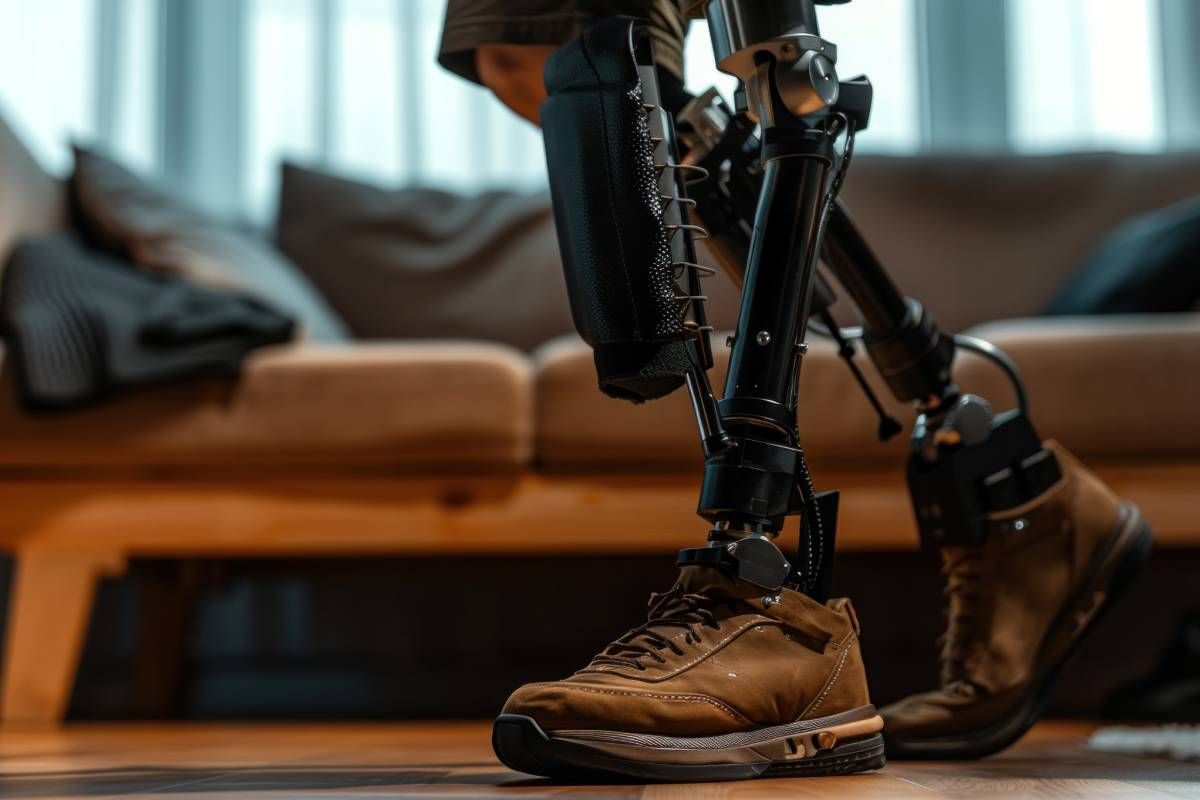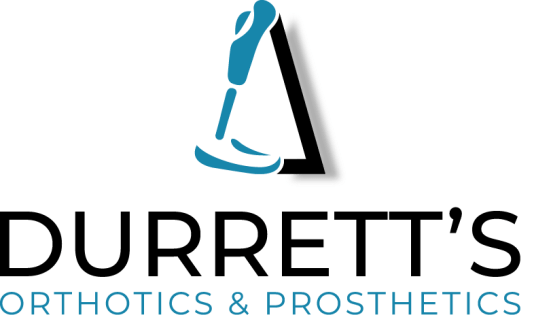With advancements in technology and materials, prosthetics are constantly changing and evolving. Originally made from heavy materials like metal and wood, today’s prostheses are more advanced than ever. The Durrett’s Orthotics & Prosthetics team would like to introduce you to the next generation of prosthetics and the benefits that they provide.

Body Powered Prosthesis
A body-powered prosthesis uses a harness, the wearer’s upper body muscles, and a cable to open or close a hook or hand. This type of prosthetic allows an amputee to regain the ability to pick up and grasp objects and assist the sound hand. A body-powered prosthetic has two default states—voluntary open or voluntary closed—so the user can choose the default state that best suits their needs.
What is a Myoelectric Arm?
Myoelectric prostheses utilize the electric signals that your muscles generate to help power the limb. A motor-powered sensor detects the signals from your muscles and translates them into movements that can execute demands. It’s an ideal option for people who want a natural-looking prosthesis that functions with existing nerves.
Choosing Between a Body Powered or Myoelectric Prosthesis
A body powered prosthesis is often the more practical choice as it is less expensive than a myoelectric device and doesn’t require an external power source. A myoelectric prosthesis offers more precision and fine motor skills, but it can take longer to adjust to using it than a body powered one. Some people choose to have both prostheses and use them interchangeably for different activities. You ask yourself a few questions before deciding which prosthesis is the best for you:
- What will its primary use be?
- Are you able to charge a myoelectric prosthesis when necessary?
- What level of durability do you need for your job duties or daily activities.
How Does a Bionic Prosthetic Leg Work?
Bionic prostheses integrate with the central nervous system, so they respond to commands from the nervous system that closely mimic the movement and functionality of a natural limb. Reinnervation uses nerves from the residual limb and reattaches them to nerves that control the joint from the amputated limb to muscles in the residual limb. This procedure allows for more natural processing and control over the prosthesis, similar to myoelectric devices.
Osseointegration for Bionic Prostheses
Osseointegration creates direct contact between the living bone tissue and a synthetic implant. This connection has several benefits:
- More stability and control over the prosthesis
- Less energy expenditure
- Elimination of suction for suspension that makes the limb more comfortable to wear.
- Reduces the possibility of degeneration and muscle atrophy that often accompany a traditional prosthesis.
Contact Us to Learn More About Today’s Prosthesis Options
As a family-owned business, Durrett’s Orthotics & Prosthetics has a highly skilled team that offers compassionate care, education about your orthotic or prosthetic device, and access to valuable community resources. We provide services for children and adults from two locations in Edgewood, Kentucky, and Lawrenceburg, Indiana.
Visit our patient info page for answers to frequently asked questions, then contact us to schedule an appointment. Durrett’s Orthotics and Prosthetics proudly serves Erlanger, Florence, Covington, Fort Thomas, Union, Walton, Edgewood, Oakbrook, Taylorsport, Fort Mitchell, Hebron, Beaverlick, Burlington, Belleview, Independence, Newport, Verona, Elsmere, KY, and Cincinnati, OH.





